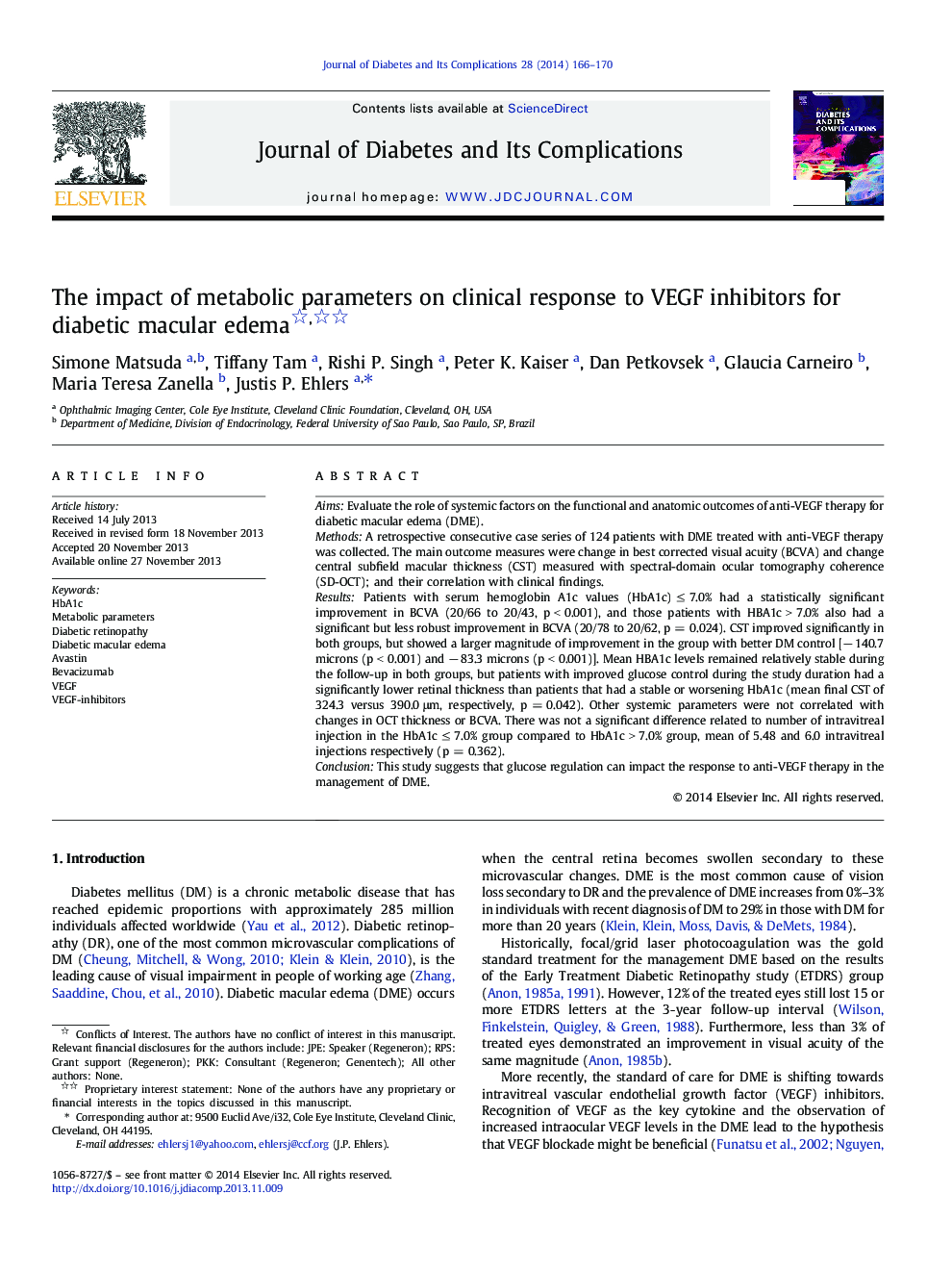| Article ID | Journal | Published Year | Pages | File Type |
|---|---|---|---|---|
| 2804294 | Journal of Diabetes and its Complications | 2014 | 5 Pages |
AimsEvaluate the role of systemic factors on the functional and anatomic outcomes of anti-VEGF therapy for diabetic macular edema (DME).MethodsA retrospective consecutive case series of 124 patients with DME treated with anti-VEGF therapy was collected. The main outcome measures were change in best corrected visual acuity (BCVA) and change central subfield macular thickness (CST) measured with spectral-domain ocular tomography coherence (SD-OCT); and their correlation with clinical findings.ResultsPatients with serum hemoglobin A1c values (HbA1c) ≤ 7.0% had a statistically significant improvement in BCVA (20/66 to 20/43, p < 0.001), and those patients with HBA1c > 7.0% also had a significant but less robust improvement in BCVA (20/78 to 20/62, p = 0.024). CST improved significantly in both groups, but showed a larger magnitude of improvement in the group with better DM control [− 140.7 microns (p < 0.001) and − 83.3 microns (p < 0.001)]. Mean HBA1c levels remained relatively stable during the follow-up in both groups, but patients with improved glucose control during the study duration had a significantly lower retinal thickness than patients that had a stable or worsening HbA1c (mean final CST of 324.3 versus 390.0 μm, respectively, p = 0.042). Other systemic parameters were not correlated with changes in OCT thickness or BCVA. There was not a significant difference related to number of intravitreal injection in the HbA1c ≤ 7.0% group compared to HbA1c > 7.0% group, mean of 5.48 and 6.0 intravitreal injections respectively (p = 0.362).ConclusionThis study suggests that glucose regulation can impact the response to anti-VEGF therapy in the management of DME.
